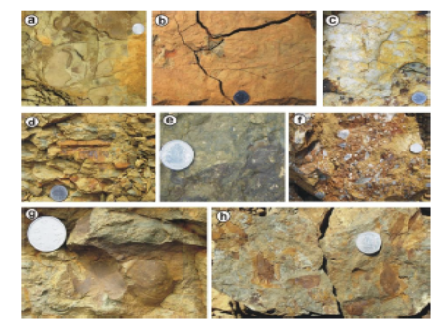


Indian Journal of Science and Technology
DOI: 10.17485/IJST/v16sp1.msc20
Year: 2023, Volume: 16, Issue: Special Issue 1, Pages: 134-147
Original Article
Lalramengi Fanai1*, Paul Lalnuntluanga2, J Malsawma2, Lalhruaitluanga1, C Lalremruatfela3
1Research Scholar, Department of Geology, Mizoram University, Aizawl, 796004, Mizoram, India
2Assistant Professor, Department of Geology, Mizoram University, Aizawl, 796004, Mizoram, India
3Assistant Professor, Department of Geology, Pachhunga University College, Aizawl, 796001, Mizoram, India
*Corresponding Author
Email: [email protected]
Received Date:23 January 2023, Accepted Date:09 June 2023, Published Date:06 September 2023
Objectives: The aim of the present study is to interprete and compare depositional environment of Upper and Middle Bhuban rocks from its trace fossil content. Methods: The trace fossils collected from the Upper and Middle Bhuban Formation are studied group wise up to species level for their systematic paleontological description with the help of type material and available literature in the laboratory. Distribution pattern of trace fossils in the sediments such as orientation, diversity, mode of preservation, relationship with the host sediments are also collected in order to interprete the depositional environment. Findings: Ichnological analysis of Upper Bhuban and Middle Bhuban Unit has been attempted to decipher the palaeoenvironment. The Upper Bhuban Unit are represented by a diverse lithofacies comprises of sandstone, shale and silty-sandstone with the presence of wavy sedimentary structure and parallel lamination. A total of 12 ichnospecies found in Upper Bhuban Unit belongs to Skolithos, Cruziana and mixed Skolithos – Cruziana ichnofacies. Phycosiphon isp. is reported for the first time in North-East India. Middle Bhuban Unit exposed along Zuangtui section comprises ~40m thick sequence of sandstone, siltstone and shale.17 ichnospecies belonging to Skolithos, Cruziana, Teredolites and mixed Skolithos – Cruziana ichnofacies has been identified along this section. Diplopodichnus is reported for the first time from the Surma rocks of Mizoram as well as other Miocene successions in India. Presence of Teredolites ichnofacies indicates marine margin environment, Skolithos ichnofacies indicate sandy shifting substrate and high energy conditions in foreshore zone while Cruziana ichnofacies indicate unconsolidated, poorly sorted soft substrate and low energy conditionin the shoreface/offshore zone. Novelty: Present study corroborate that Upper Bhuban rocks were deposited under shallow marine environment while Middle Bhuban rocks were deposited in a deeper, quiet water environment.
Keywords: Bhuban Formation; Surma Group; Ichnofacies; Depositional environment; Ichnofossils
© 2023 Fanai et al. This is an open-access article distributed under the terms of the Creative Commons Attribution License, which permits unrestricted use, distribution, and reproduction in any medium, provided the original author and source are credited. Published By Indian Society for Education and Environment (iSee)
Subscribe now for latest articles and news.